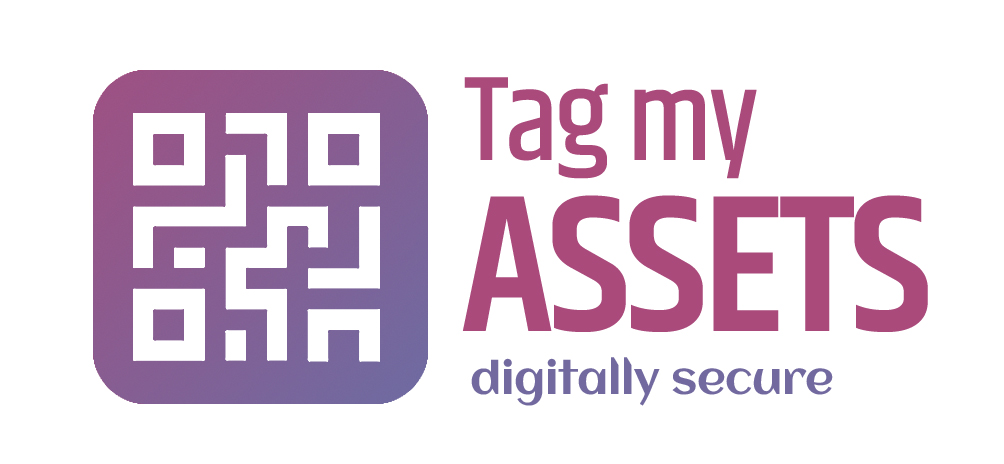What is Tagging of Fixed Assets
Asset tagging is affixing tags or labels to Fixed assets (Movable or Immovable Assets) to identify each one individually and track data. Enabling businesses to achieve a holistic view of their owned assets.
By attaching tags and labels to assets, A wide range of data and record is gathered in a digitised asset register. Asset data can include:
- Location and Sub location of Assets
- Users
- Purchase history
- Maintenance schedules
- Depreciation value etc
Why Asset Tagging is Important
For asset-intensive businesses it is very essential to have control over assets that can be achieved by Tracking only. But Assets Tracking is possible only when the asset are tagged and location and other details are properly recorded.
Tagging assets ensure important factors such as:
- Theft prevention
- Maintenance schedules
- Real-time tracking etc
Types of Tagging
Important part in asset tagging is, to the choice of tags which fulfils the below requirements
1. Cost Effective
2. Easy to tag
3. Provide all relevant information
4. Matched with asset property. E.g. Metal Tags for High Temperature and rusted assets.
1. Bar Codes Tags : These are commonly used in businesses as easy to print and cheap in cost. Bar code is varying bars and spaces that represent unique numbers and letters, barcodes can be read by simply scanning them with a compatible reader; whether a handheld scanner or smartphone. The storage capacity of Barcode is more than 100 bytes.
2. QR Codes Tags : QR code is called as “Quick Response”, it allows us to encode or store over 4500 characters in a two-dimensional bar code. These codes are the “square barcodes” QR code storage capacity is 2 kilobytes.
3. RFID Tags:
RFID tracking process of tracking assets:
1. Data is stored on a tag and attached to an asset
2. An antenna identifies the signal of a nearby tag (passive or active)
3. A reader connects to the antenna and receives the data stored on a tag
4. The reader transmits the data to a database
Radio-frequency identification, RFID tags are also of two types
i. Passive Tags
Passive RFID tags are battery less tags and have no internal power source and are powered by a reader. Passive tags have a lower signal range than active RFID tags
Passive Tags have longer life expectancy than active RFID tags. They are an inexpensive option starting at an average price of Rs to10 to Rs 50 per tag (Depends on Size of tags and Type of tags (Inlay Tags or hard Tags)
ii. Active RFID tags
Active Tags are battery-powered tags that continuously transmit signals and transmit data in real-time. These tags are available in different signal range. These are more expensive than passive RFID tags.
American retailer Walmart spent $500 million implementing an RFID system in 2004. While UK clothes retailer River Island increased their stock accuracy from 70% to 98% by deploying active and passive tags across stores and warehouses.
Beside the warehouse these tags are widely used in tracking of Livestock. E.g. cattle tags
4. GPS tracker
GPS (global positioning system) tracking works by communicating with satellites to triangulate an exact position. These trackers provide accurate real-time location data and are ideal for tracking large moveable assets such as equipment and vehicles.
Although GPS systems are little expensive still they are an effective tracking solution for fleet management, logistics, and transportation organisations Automobile Industry.
These tags are attached directly to assets, once an asset is used and returned, a precise and real-time update on its use and location via an asset tracking system can be gathered. Its they are an effective tracking solution for Management of Assets at OEM.
5. NFC Tags
NFC (Near Field Communication) is a subset of RFID technology. but, unlike RFID, NFC tags offer two-way communication. Enabling them to transmit data between electronic devices and tags. NFC tags can store up to 4KB of data in various formats.
Comprehensive and complete Tagging Process of all fixed assets of an Organisation.
| Sr. No. | Heading | Sub Heading |
| 1. | Data Cleaning and upload of data in software | Cleaning of data and removal of unrealistic data from source document.
Category wise data upload in software and reconciled with source data. Assistance in creation of Assets code. Assistance in creation of Users and custodian. Data bifurcation on the basis of tagable and non tagable. Upload of Information of AMC/ Guarantee and Insurance based on vouchers and Invoices.
|
| 2 | Initial Tagging on all assets. | Prepare Asset Tagging guidelines with the management which will helps to find out the tags later for scan and audit purpose.
Printing of tags and fixing of tags on respective assets Scan the tags to mark it physically available in software also with the help of Mobile Application. Upload of Picture of High Value Assets into the software. |
| 3 | Updating of FAR based upon actual verification post tagging | Addition/ Sold of Assets (till the date of final handover of system to the company) post physical verification will be adjusted in software |





